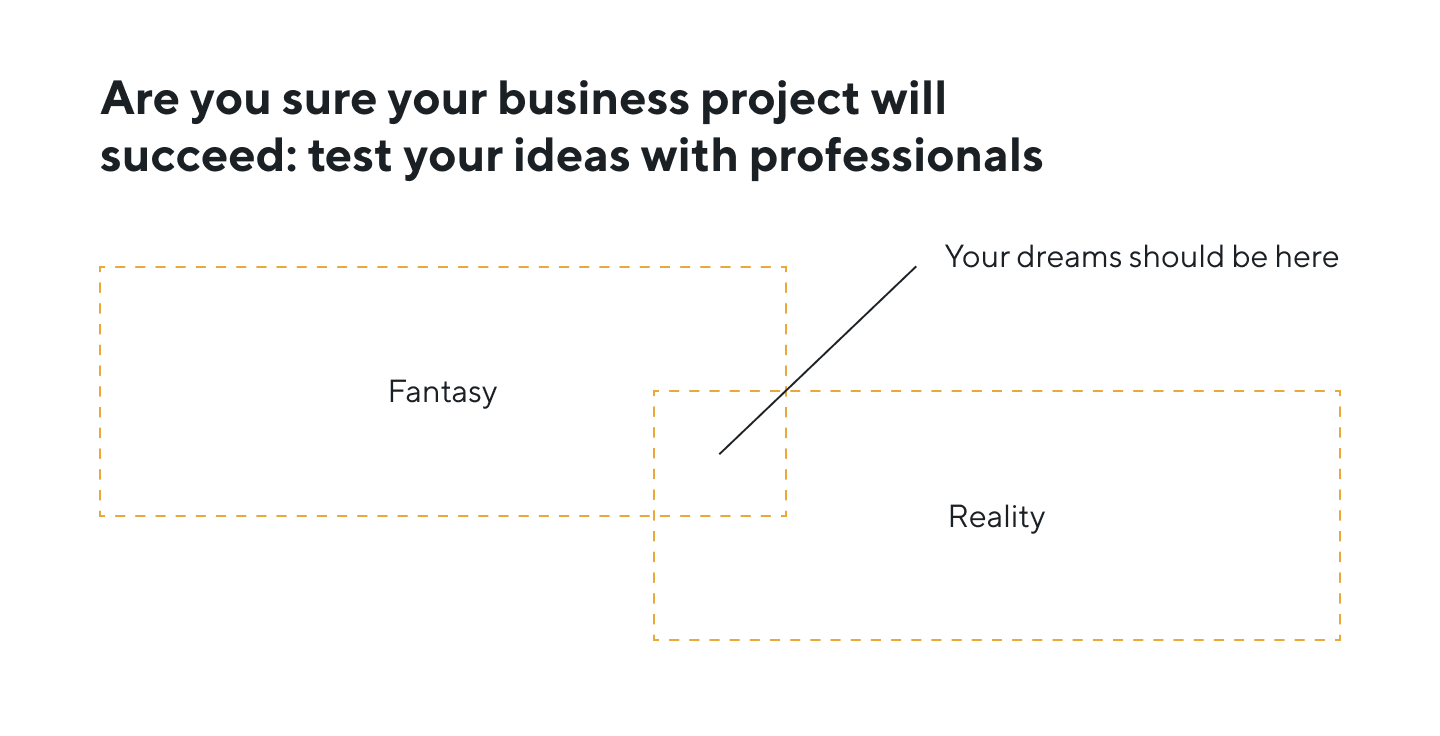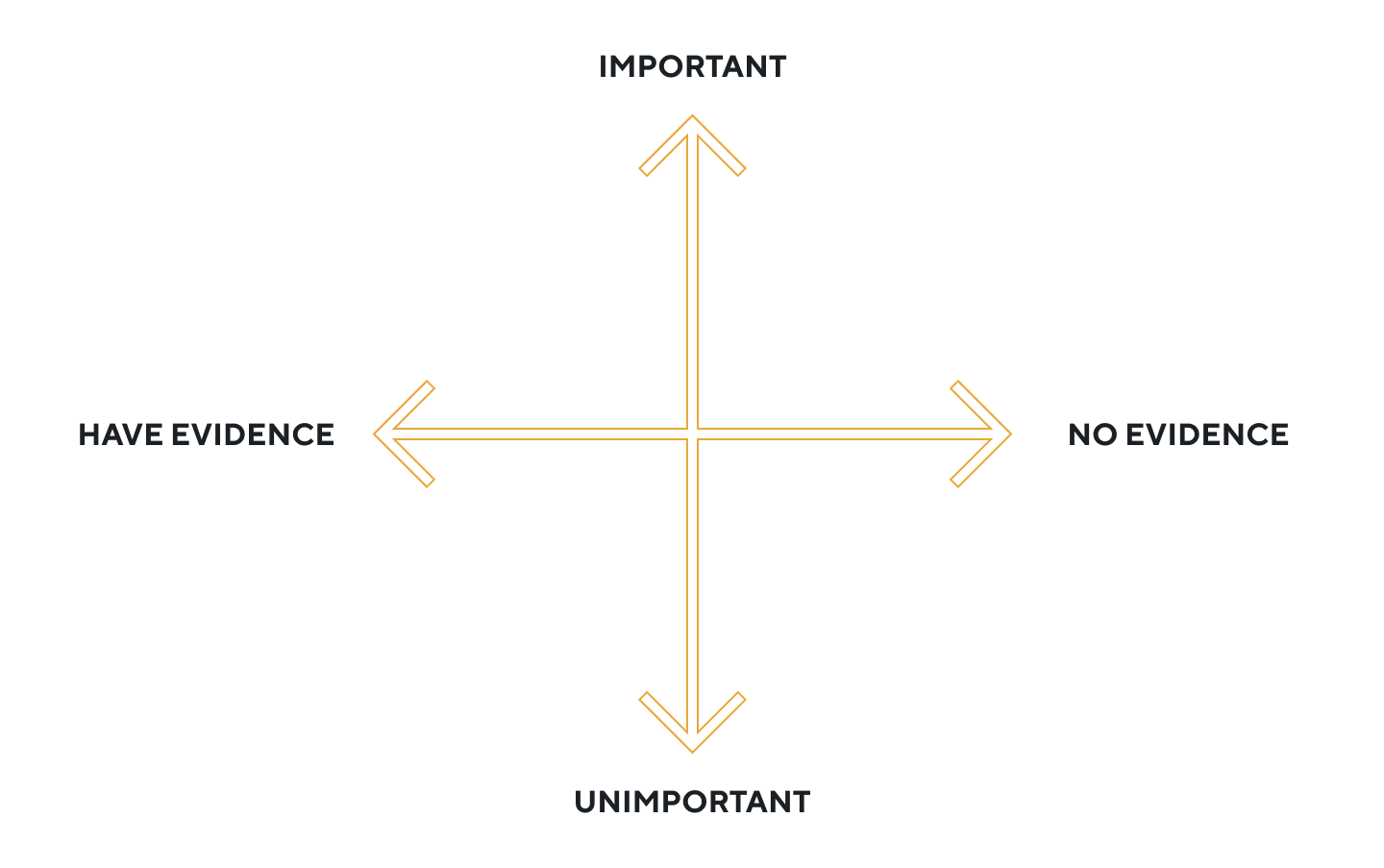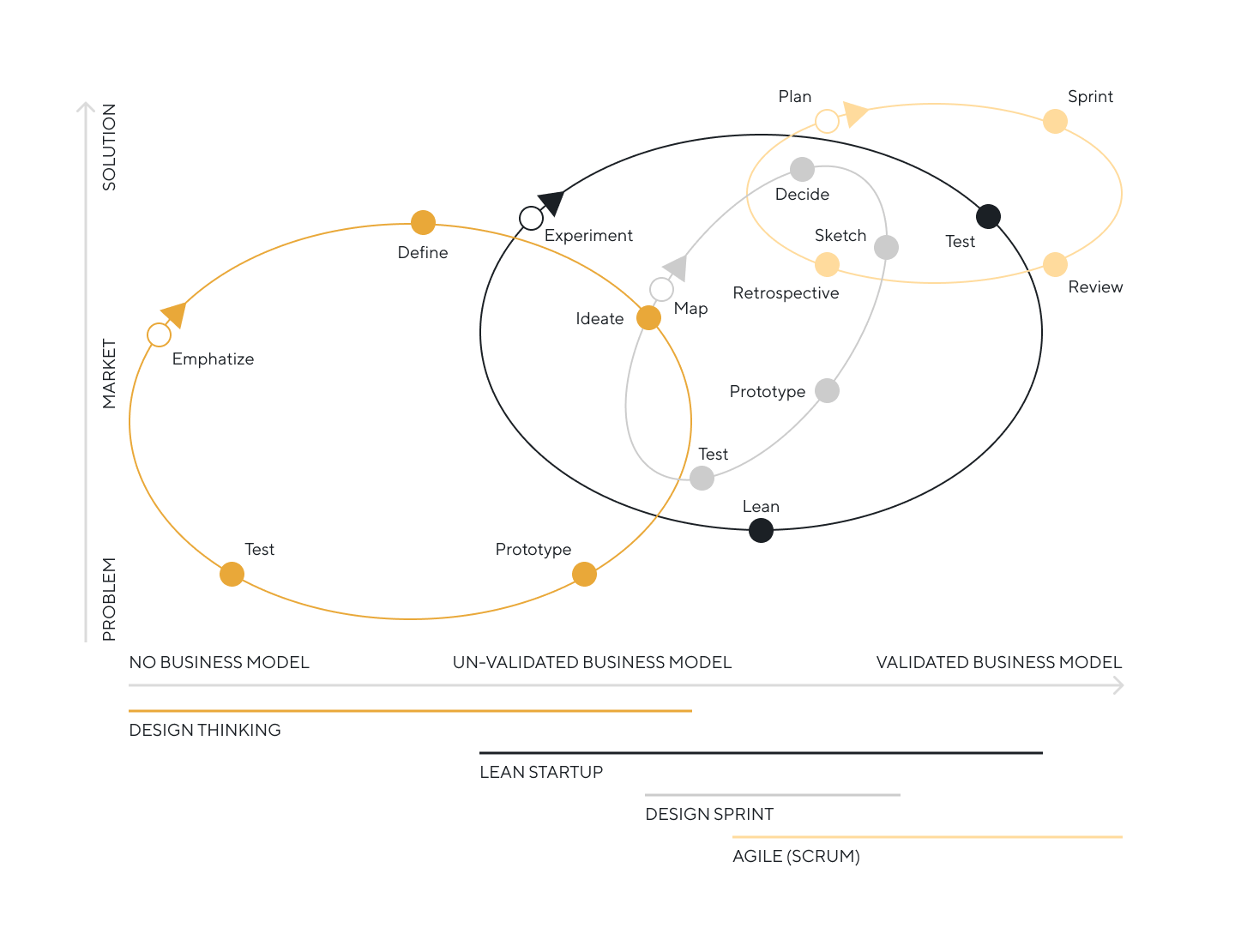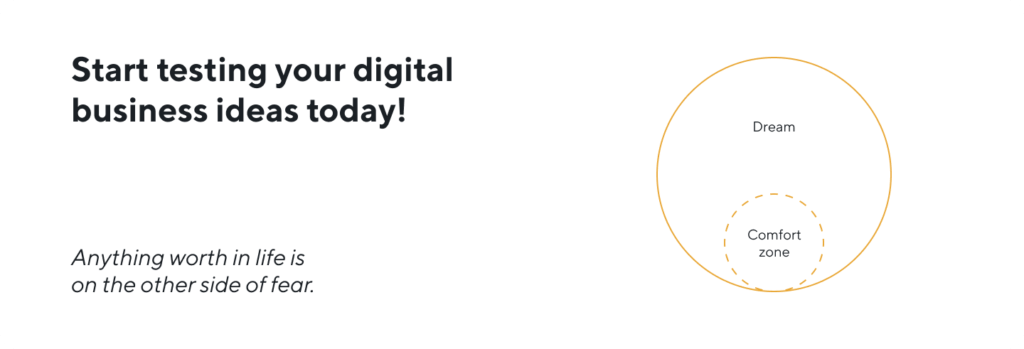We already know that good digital products take time to implement, and good beta versions of a product usually cost $100k+. You may have an amazing idea, but it will fail if the market does not accept it.
There are 3 main risks that you have to consider while making a list of your hypotheses.
| Technology Risks | Problem vs Market Fit Risks | Business model Risks |
|---|---|---|
| We can’t build and deliver what is expected. The technology is not available, or the business can not get access to the required API or data. | Your potential users are not very interested in your solution. You can not reach, acquire or retain enough users. | Your startup can not generate enough revenue, users are not willing to pay enough for the product, or the revenue is not enough to cover the business-related costs. |
The good news is that there are a number of not expensive tests. You can get users feedback before investing a lot into full-scale product development. Some people call this approach testing with low-fidelity MVP. There are three things you will need to do right in your low-fidelity MVP:
- Specify and pivot your idea.
- Reach out to your audience as soon as possible.
- Collect and validate feedback and results.
How to explain your MVP idea to the potential audience
At the Idea stage, you do not have a validated business model, however you still need to explain your ideas to the team, investors and potential users. Usually you use one or a few following tools to do this:
-
Product Brief
A product brief is a concise document that outlines the key features, benefits, target audience, and unique selling propositions of your MVP. It provides a high-level overview of your product idea, allowing you to effectively communicate its value proposition. A product brief typically includes information about the problem you aim to solve, the solution you propose, and the intended market.
-
Prototype Presentation
Utilizing a prototype is an excellent way to showcase the functionality and user experience of your MVP. By creating a visual representation of your product, you can give your potential audience a tangible sense of how it works. During a prototype presentation, you can walk your audience through the key features, interactions, and workflows, enabling them to visualize the end product and provide valuable feedback.
-
Business Model Design
While you may not have a fully validated business model at the idea stage, it is important to convey your understanding of how your MVP will generate value and revenue. Creating a business model design allows you to outline your key revenue streams, cost structure, customer segments, and distribution channels. This tool helps potential investors and stakeholders grasp the potential viability of your product idea and the underlying business logic.
-
Landing Page
A landing page serves as a simple yet effective way to introduce your MVP idea to a wider audience. It typically includes a concise description of the problem your product aims to solve, its key features, and an invitation for interested users to sign up for updates or early access. A well-designed landing page can generate interest, capture leads, and provide a platform for potential users to engage with your product idea.
-
Explainer Video
An explainer video is a dynamic and engaging tool to communicate your MVP idea effectively. It combines visual elements, storytelling, and concise messaging to convey the core value proposition of your product. An explainer video can capture the attention of your audience and provide a memorable and impactful overview of your MVP. It is particularly useful for social media platforms and websites.
-
Explainer Email
Sending an explainer email to your target audience, including potential users and investors, allows you to provide a more detailed introduction to your MVP idea. This email should highlight the problem you aim to solve, explain the unique value proposition of your product, and outline the benefits users can expect. Including visuals, such as screenshots or concept art, can further enhance the clarity of your message.
By utilizing these tools and strategies, you can effectively communicate your MVP idea to your potential audience, garner interest, gather feedback, and build anticipation for your product. Remember to tailor your communication approach to the preferences of your target audience and emphasize the key aspects that differentiate your product from existing solutions in the market.
The goal of this step is to define the main idea behind your product, explain what problem the product will solve, and prepare a business model which still be un-validated yet.
Form a list of your hypotheses and questions
Un-validated business models are usually based on a good portion of un-validated hypotheses which we should prove or disprove. You do not have to test every hypothesis as a test will take time and will cost you from $1,000-$5,000.
- Ask experts’ opinions. Make a list of your product related hypotheses, prioritize them and involve experts in the room and try to answer as many of them as you can. For those hypotheses, which can not be answered easily by experts, you should be reaching out to your potential users.
- Test the most important first. Prioritize again, and test only critical and those which do not have real market evidence.
It is better if you assign a person to do those tests and experiments and will set a very specific deadline.
Reach your audience
There are several modern tools you can use to reach your audience:
- Search ads
- Outreach campaign (Email + Social Media)
- SMM campaign
- Social media ads
- Customer Interviews
Testing itself is not free. You have to prepare marketing materials that explain your ideas, collect contact information, set up an ad campaign etc. Based on our experience, testing of one hypothesis may cost you from $1,000 – $5,000.
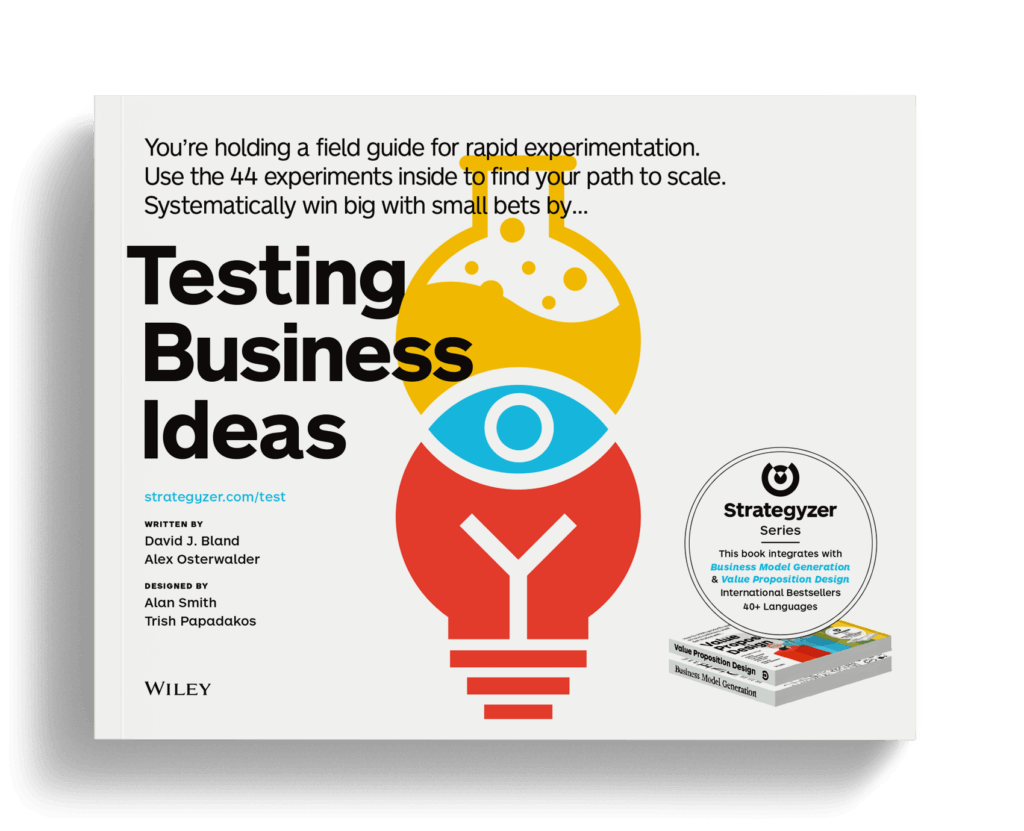
Our recommendation is to read the book “Testing business ideas” written by David J. Bland and Alex Osterwalder. In the book you can find all the explanations regarding business modeling, hypothesis, and related experiments.
Validate feedback and results
For a product designer, validating user feedback and testing results are crucial steps in the design process to ensure that the final product meets user needs and expectations. Here are some common tools and techniques used for this purpose:
- User Testing Sessions: Conducting user testing sessions involves observing real users interacting with the product or prototypes. These sessions can be conducted in-person or remotely using tools like Zoom, UserTesting, or Lookback. User feedback is collected through interviews, surveys, or direct observation.
- A/B testing (also known as split testing) involves comparing two versions of a product or feature to see which performs better with users. This technique allows designers to make data-driven decisions by testing changes on a subset of users and measuring the impact on key metrics.
- Prototyping tools like Figma, Sketch, or Adobe XD enable designers to create interactive mockups of their designs. These prototypes can be shared with users for feedback, helping to uncover usability issues and gather insights on user preferences.
- Usability testing focuses on evaluating how easily users can complete specific tasks with the product. This can be done through moderated testing, where a facilitator guides users through tasks, or unmoderated testing using platforms like Maze or UsabilityHub.
- Surveys and questionnaires are effective tools for gathering quantitative data from a larger group of users. Online survey tools like Google Forms or SurveyMonkey can be used to collect structured feedback on various aspects of the product.
- Heatmap and click tracking tools like Hotjar or Crazy Egg help visualize user behavior by showing where users click, hover, or scroll on a website or app. This information can be valuable in identifying areas of interest and potential usability issues.
- Analytics platforms like Google Analytics or Mixpanel can provide valuable data on user behavior, such as session duration, page views, and user flow. These insights help designers understand how users interact with the product.
- Customer support feedback: Leveraging feedback from customer support channels, such as emails or live chat transcripts, can provide valuable insights into recurring issues, pain points, and user satisfaction.
- In contextual inquiry designers observe users in their natural environment, using the product as part of their regular routine. This approach helps designers understand real-life use cases and identify opportunities for improvement.
- Expert Reviews: Engaging other product designers or domain experts to review the product can provide valuable feedback from an experienced perspective, helping to identify potential design flaws and opportunities for optimization.

Remember that the choice of tools and techniques will depend on factors such as project scope, budget, timeline, and the specific research goals. Combining multiple methods can lead to a comprehensive understanding of user needs and ensure a user-centered design approach.
Conclusion
MVP is a continuous cycle of tests and experiments; you have to run those tests with both eyes open. Sometimes the market will prove you are right, sometimes, you will need to learn and adapt, and often the market will kill your solution, and so you have to kill it as well.
Do not get in love with your idea, if tests clearly show you that there are no problems that your users want to solve, or they are not ready to pay to solve the problem, there are no product market fit, and you will save your time and money if you just kill your idea early.
Please do not worry, as there are an unlimited number of other opportunities which can make you a successful entrepreneur.
Are you sure your business project will succeed? Test your ideas with professionals.
